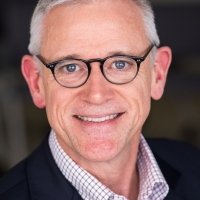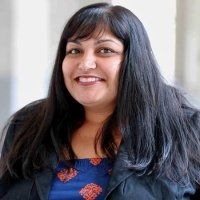The Demographic Dividend: Economic Growth With Changing Age Structures
In the latter half of last century, Thailand and other East Asian countries successfully capitalized on shifts in their age structures to gain a boost in economic productivity, a phenomenon known as the demographic dividend. Today, despite the hitherto sluggish pace of Africa’s demographic transition, scholars and politicians remain hopeful that similar changes on the continent may lead to faster development in coming decades.
“I thought we were going to have a very pessimistic view in Africa,” said David Canning, professor of economics and international health at Harvard University, speaking at the Wilson Center on October 15, but “the result of the research that we’ve done has made me much more optimistic.”
Joining Canning to discuss what it takes for developing countries to maximize their chances for a demographic dividend were Jay Gribble, principal associate at Abt Associates and co-author of Achieving a Demographic Dividend; Sangeeta Raja, a senior health specialist at the World Bank; and Marlene Lee, academic research and relations program director at the Population Reference Bureau.
Earning the Dividend
The UN’s latest population projections put Africa at two billion people in 2040, with the share of 12-to- 24-year-olds growing from 18 percent to 28 percent. The size of the same age cohort for every other region of the world is projected to decline. “People often think, ‘well we’ve got a young population; we’re going to cash in on a dividend,’” Gribble explained, “but age structure alone isn’t going to make it happen.”
History shows that youth bulge – a larger proportion of people between the ages of 15 and 29 than any other age cohort – is a necessary condition of the demographic dividend, but not a sufficient one, Gribble explained. Alongside decline in totally fertility rate (average number of children per woman), which is required to transition from unending growth to a youth bulge age structure, national governments also have to implement policies that create opportunities for young people to contribute significantly to society. When these conditions occur, the result is a larger proportion of working age people to dependents, which boosts economic productivity.
Though Lee cautioned against advertising a “silver bullet” package of policies that guarantees a dividend, she and the panelists highlighted a few indicators that – alongside youth bulge – have correlated with achieving the dividend in Asia.
Female education is perhaps the strongest indicator. Canning explained his optimism for Africa came after seeing data on women in Ethiopia with at least 12 years of education having children below replacement rate (2.1 children per woman), while those with no education were having closer to six children. “We see this throughout Africa: Women with higher levels of education are having very low fertility,” he said. “There aren’t that many of those women yet, but actually education levels are going up.”
Although Africa’s demographic transition has been slower than other regions to date, Canning suggested that positive feedback mechanisms, like the effect of improved education, can make demographic transitions happen quickly. Current national level fertility data can therefore be an unreliable indicator of future age structures, he said.
On the other hand, Gribble advised against putting too much stock in female education alone to drive the demographic transition and give countries a chance to achieve the demographic dividend. He emphasized the importance of coupling education policies with voluntary family planning programs in order to give women of all ages an opportunity to control their fertility, rather than just those coming through school now, who likely to stay in school longer than their mothers. Gribble also highlighted the consistently strong correlation between health and wealth throughout the world, making a case for further for health care investments.
One Size Will Not Fit All of Africa
Lessons learned from East Asia’s experience achieving the demographic dividend are a good place to start, but, as Canning’s fertility data from Ethiopia shows, “there is a huge heterogeneity in Africa,” Raja said, which has “significant implications on the policies a country puts in place.”
Canning pointed out that while many parts of Africa have been largely successful in reducing child mortality – a historical precursor to the transition to lower fertility – some areas still struggle with high death rates of children under five. Other countries should focus on female education, he suggested, while many southern African countries already have low fertility and need to get supportive economic policies in place. “It will not be all countries in Africa that benefit from a demographic dividend, but actually some really do have the potential to do it,” he said.
Gribble noted that even once country-appropriate health, education, and economic policies are in place, the implementation of those policies needs to be flexible. He explained that Asian countries typically had deliberate development plans in place but had also capitalized on opportunities as they arose. “This idea of strategic vision is a critical commitment,” he said, “but recognizing that we live in a dynamic world and there are opportunities to be taken advantage of is part of the deal too.”
Act Today For Tomorrow
The dynamic aspect of development poses a challenge to harnessing the demographic dividend. Changing age structures shape the opportunity, but the dividend is not automatic. “It’s really important to get the economics and population policies in tandem,” Canning said. “Having both the economics and the demography working together is why East Asia was so successful.”
Good governance and long-term economic policies, such as job creation, openness to trade, and access to credit, are just as important as better education and health care. “It’s the difference between politics and policies,” Gribble said. “There has to be a lot of commitment to make a demographic dividend happen. It’s a complex process, and that means that leaders need to be willing to put the well-being of their nations first ahead of personal gain.”
Though the process is long, it should not be put off, said Lee. Changes in fertility rates take a long time to affect society; if African politicians hope to achieve the dividend, they need to start working towards policy changes sooner rather than later.
“The future will very much depend on what policies each country puts in place,” Raja said, “but there is hope to move forward.” Ultimately, “Africa does have the potential to harness the demographic dividend.”
Event Resources:
Drafted by Laura Henson, edited by Schuyler Null
Speakers

Senior Director, Palladium; Deputy Director, PROPEL Health; Global Fellow, Wilson Center

Hosted By

Environmental Change and Security Program
The Environmental Change and Security Program (ECSP) explores the connections between environmental change, health, and population dynamics and their links to conflict, human insecurity, and foreign policy. Read more


Global Risk and Resilience Program
The Global Risk and Resilience Program (GRRP) seeks to support the development of inclusive, resilient networks in local communities facing global change. By providing a platform for sharing lessons, mapping knowledge, and linking people and ideas, GRRP and its affiliated programs empower policymakers, practitioners, and community members to participate in the global dialogue on sustainability and resilience. Empowered communities are better able to develop flexible, diverse, and equitable networks of resilience that can improve their health, preserve their natural resources, and build peace between people in a changing world. Read more


Africa Program
The Africa Program works to address the most critical issues facing Africa and US-Africa relations, build mutually beneficial US-Africa relations, and enhance knowledge and understanding about Africa in the United States. The Program achieves its mission through in-depth research and analyses, public discussion, working groups, and briefings that bring together policymakers, practitioners, and subject matter experts to analyze and offer practical options for tackling key challenges in Africa and in US-Africa relations. Read more
